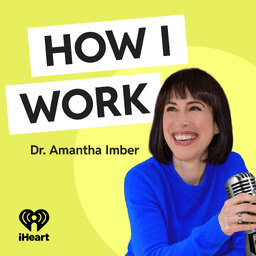Quick Win: Google's Laura Mae Martin on the simplest way to communicate your boundaries
Google's top time management expert Laura Mae Martin shares the secrets of setting clear boundaries at work.
Learn how to:
- 🛑 Set powerful boundaries that stick
- 💬 Communicate your work preferences effectively
- ⚖️ Balance passion for work with family priorities
Whether you're a busy professional or an aspiring leader, Laura May Martin's insights will revolutionise how you approach your work and life.
Connect with Laura on her Instagram or at the Google Keywords blog.
Listen to the full Interview with Laura here.
My new book The Health Habit is out now. You can order a copy here: https://www.amantha.com/the-health-habit/
Connect with me on the socials:
Linkedin (https://www.linkedin.com/in/amanthaimber)
Instagram (https://www.instagram.com/amanthai)
If you are looking for more tips to improve the way you work and live, I write a weekly newsletter where I share practical and simple to apply tips to improve your life. You can sign up for that at https://amantha.substack.com/
Visit https://www.amantha.com/podcast for full show notes from all episodes.
Get in touch at amantha@inventium.com.au
Credits:
Host: Amantha Imber
Sound Engineer: Martin Imber
Episode Producer: Rowena Murray
 How I Work
How I Work


